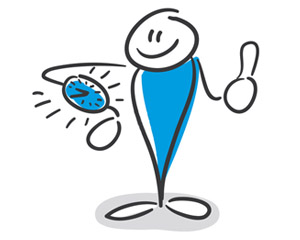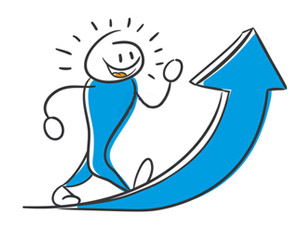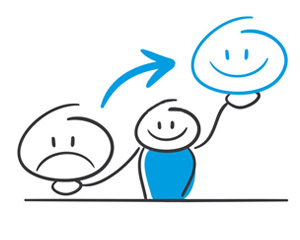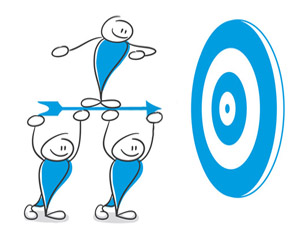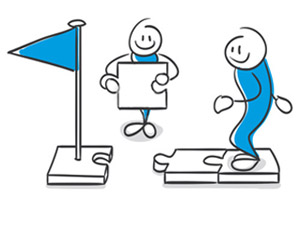Why to be Agile?
Following are most important benefits that Agile provides to organizations, teams, products and individuals. To take advantage of those benefits,
you need to trust in empiricism, find out more about the frameworks by using it (Scrum, Kanban, XP, etc.) and continually inspect and adapt your Agile transition.
Faster time to market
Agile has been proven to deliver value to the end customer 30% to 40% faster than traditional methods.
High-value features are developed and delivered more quickly with short cycles, than with the longer cycles favored by classic, plan-driven processes (i.e. "waterfall").
This decrease in time is due to the following factors:
-
The most valuable requirements can be delivered first
-
Teams continously colaborate on requirements and provide real-time clarification and feedback
-
Teams produce working requirements that are really done much more faster
-
No need to wait until the entire "project" is complete before releasing anything to the market
Better Quality
Agile provides continual feedback and exposure to make sure that quality is as high as possible.
A key principle of Agile is that testing is integrated throughout whole lifecycle, enabling regular inspection of the working product.
This allows to make adjustments if necessary and gives early sight of any quality issues.
Agile helps ensure quality by the following practices:
-
Defining and elaborating on requirements just-in-time, so that knowledge of product features is as relevant as possible
-
By breaking down requirements into small enough units, the team can focus on high-quality testing, and collaboration
-
Regular and continuous improvements of output through cyclic reviews with customer (or other stakeholders)
-
Allowing the team to continuously improve such team-specific factors as processes, tools, relationships and work environment
-
By producing frequent builds, quality is improved by finding and fixing bugs quickly
Increased Return On Investment
The decrease in time-to-market is one key reason that teams realize a higher Return On Investment (ROI).
When revenue and other benefits start coming in sooner, earlier accumulation means higher total return over time.
In addition to time-to-market benefits, ROI with Agile also increases by:
-
Regular feedback through reviews directly from customers, enables course corrections early,
which is less costly and time consuming
-
Fewer costly defects due to automation and up-front testing means less wasted time and faster deployments
-
Reducing costs of failure (if gonna occures - occures earlier)
Higher customer satisfaction
The active involvement of a customer, the high visibility of the product and progress and
the flexibility to change when change is needed, create much better business engagement and customer satisfaction.
Agile enables happier product sponsors through the following:
-
Keeping requirements updated and ordered to respond quickly to change
-
Demonstrating working features to customer very often
-
Delivering requirements to end customers faster with every iteration, rather than all at once at the end of "project"
-
Collaborating with customers as partners and keeping them involved and engaged throughout
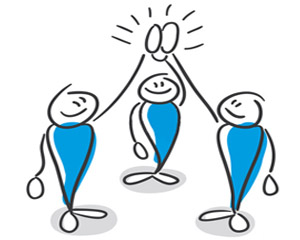
Higher team happiness
Through active involvement, cooperation and collaboration, Agile makes place of work much more enjoyable for teams.
Instead of big specs, requirements are being discussed on workshops.
Instead of long status reports, discussing progress is taking place around a task-board.
Instead of long project plans, decisions what is right for the product is being discussed with the team which is empowered to make decisions.
This is much more rewarding approach for everyone. It helps to create highly motivated and high performance teams.
Agile improves the morale of team in these ways:
-
Being part of self-organizing team allows people to be creative, innovative and acknowledged for their expertise
-
Working cross-functionally allows team members to learn new skills and to grow by teaching others
-
Teams may organize their structure around people with specific work styles and personalities
-
Having a peer relationship with a customer on the same team, it aligns technical and business priorities
-
Having an Agile Coach, who teaches the team about Agile frameworks, values, tools and best practices
-
Encouraging a servant leadership approach, Agile helps managers to become leaders to avoid command-and-control old fashioned methods
-
Providing an environment of support and trust increases teams overall motivation and morale level
-
Having lots of face-to-face conversations, Agile helps to reduce frustration of miscommunication
Better communication
When teams take responsibility for developing products (or services), they can produce great results.
Teams collaborate and expecially take ownership of quality and performance.
Teams are using the following practices:
-
Team and customer work closely together on a daily basis
-
Team organizes its work around ordered list of reqirements
-
Working in a colocated environment, Agile allows transparent communication and collaboration among teams and customer
-
Making decisions by consensus
More relevant metrics
The metrics that teams use to estimate time and cost, measure performance and making decisions are often more relevant and more
accurate than metrics on traditional plan-driven projects. Using Agile approach, metrics are more relevant because:
-
Timelines and budgets are based on each team’s current performance and velocity
-
Team (experts), and no one else, provides estimation of effort for requirements
-
Using relative estimates, rather than hours or mandays, tailors estimated effort to a current team’s knowledge and experience
-
In less than one minute a day, team can update metrics, providing visibility of how the team is progressing toward a goal
-
Very often (every iteration if used) it is possible to compare actual cost (AC) plus the opportunity cost (OC) -
there is no need to wait until the end of project to know what its value is
Improved progress visibility
In Agile every member of the team (and stakeholders) has the opportunity to know how the product is going at any given time.
Transparency and visibility make an exposure model to help the team accurately identify issues and more accurately predict how things will go.
Agile can provide a high level of progress visibility by:
-
Placing a high value on open, honest, transparent communication among the team, customers and anyone else within an organization
who wants to know about a product (or service)
-
Task boards enable teams to self-organize and identify the highest-priority tasks for the day
-
Retrospectives allow team members to identify what’s working well and what’s not, to make action plans for improvement
-
Anyone within an organization may attend on review and see current progress
Reduced risk
Small incremental releases promotes visibility to the team, custmer and other stakeholders to identify any issues early and make it easier to respond to change.
The clear visibility in Agile helps to ensure any necessary decisions can be taken at the earliest possible opportunity.
It is based on following practices:
-
Having the highest-risk reqirements done quick
-
Ensuring a short time between initial investment and either failing fast or validating that a product or an approach will work
-
Providing constant feedback on products and processes
-
Empirical way of reducing risk is the only right approach here
